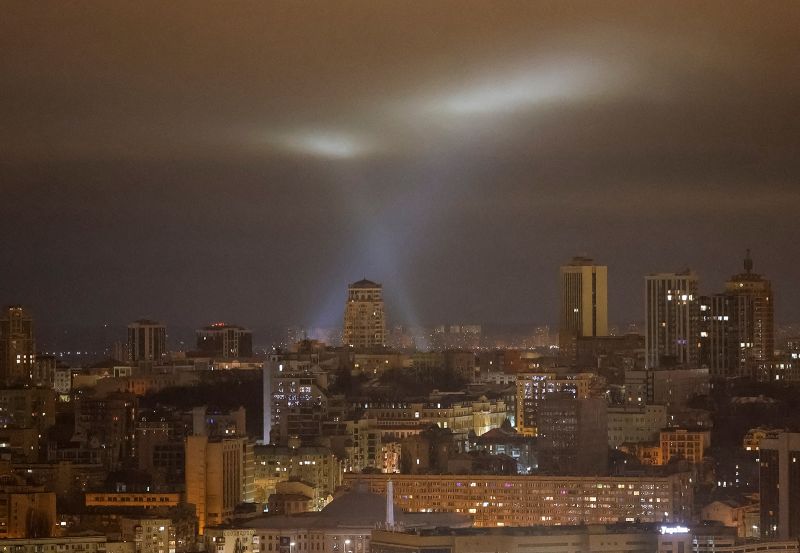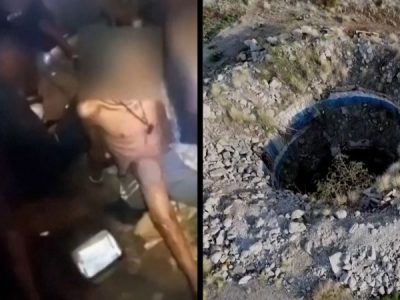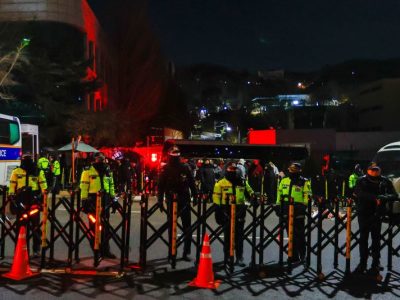
Not many children can say they took their first steps on board a yacht in the Arctic’s northwest passage. But Tom can. He spent three of the first four years of his life at sea, with his parents Ghislain Bardout and Emmanuelle Périé-Bardout — ocean explorers and founders of Under The Pole, an organization on a mission to document the deep.
The Bardouts estimate that both their children — Tom and Robin, now aged 8 and 12 respectively — have spent around half their lives aboard the family’s expedition schooner, “The Why.”
They’ve explored the furthest reaches of the planet, from polar ice to tropical reefs, as part of a mission to document the ocean’s mesophotic, or “twilight,” zone, an area that lies between 30 and 150 meters (100 and 490 feet) below the surface.
The couple, both passionate divers, decided that they wanted a family but weren’t ready to give up on ocean expeditions. “So we invented the way we wanted to work and live,” says Emmanuelle.
When on land, the family is based in Concarneau, a small coastal town in Brittany, northwestern France. When at sea, the 18-meter-long yacht becomes their home, shared with around 10 other people, including scientists, doctors, a cook and a teacher.
Despite their unusual setup, Emmanuelle insists they still have a normal routine. “We work like normal people and have kids at school,” she says.
However, most ordinary people don’t do the same work as the Bardouts. In fact, few have seen what they have seen in the deep ocean – and that’s the point.
While oceans cover 70% of the planet, they remain some of the least explored and understood ecosystems on Earth. Less than 30% of the global seafloor has been mapped in any detail and experts estimate that up to 91% of marine species are still unknown to science.
What is known is that these ecosystems are coming under increasing stress, threatened by a rise in sea temperature, leading to mass bleaching events, as well as pollution and overfishing. The Bardouts believe that by documenting what lies beneath the surface, they may be able to raise awareness of the threats and aid its recovery.
“We go to places where nobody has been before,” says Emmanuelle. “I think when you are doing exploration like we are doing, it gives us a huge responsibility.”
Mediterranean forests
Most recently, the family were exploring waters a bit closer to home, in the Mediterranean Sea. For Under The Pole’s DeepLife program, which is part of the Rolex Perpetual Planet Initiative, they went on a series of two to three-month missions, searching for what they call “marine animal forests” in Greece, Italy and France.
These are diverse ecosystems in the deep ocean, full of sponges and corals such as red gorgonia and black coral, that form something like a terrestrial forest, with its own microclimate that provides a refuge for a range of species.
However, like forests on land, they are fragile, and if disrupted the ripple effects are significant. “If you cut this habitat, all the other species are going to disappear and by the end you will just have a rocky desert,” says Ghislain.
He explains that in recent years the Mediterranean has suffered from more frequent and severe marine heatwaves that have killed a lot of surface ecosystems. It is also affected by bottom trawling, a fishing technique that tows a net along the ocean floor to catch fish.
Ghislain says the aim is to study the biodiversity, ecosystems and ecological function of these marine animal forests, in particular how the twilight zone is faring in comparison to shallower waters.
The team traveled to Fourni, Greece, because they had seen images of a potential forest captured by an underwater drone in 2021, which they wanted to document for the first time. After various unsuccessful dives and spotting signs of bottom trawling on the seafloor, they feared that it might have been destroyed altogether. Then, they discovered it: a rich marine animal forest about 100 meters (328 feet) deep.
“When you find a marine animal forest, you find an oasis, you find life, you find a very rich ecosystem that is living all together,” says Ghislain. “It’s really this oasis of life we want to show to the world.”
Over the weeks that followed, they collected data on every aspect of the ecosystem, from currents and acoustics to bacteria and sea life. They plan to collate all of this research and present their findings in June 2025 at the United Nations Ocean Conference in France. By proving the importance of these ecosystems, they hope to persuade governments to protect these areas and take action against the fishing practices that are damaging them.
Deep diving
It is only in recent decades that technology has advanced enough to enable dives into the twilight zone, and it is still an incredibly specialist operation, requiring years of training. Divers use “rebreathers,” originally designed for military purposes, which absorb carbon dioxide from exhalations and recycle it as oxygen. This allows them to stay underwater far longer than with scuba tanks, and because it doesn’t create bubbles, it causes less disruption to the sea life.
On a typical mission, lasting six or seven months, the team will complete between 300 and 400 dives, says Ghislain. Each one can last anywhere between three and six hours, with the majority of that reserved for the ascent, allowing the body time to decompress.
“When we are at 100 meters, time is running super fast,” he says. “We are focused on the mission, deploying samples, deploying sensors, taking some pictures… and then after 20 minutes more or less, it’s time to go up.”
It’s physiologically exhausting – you can lose 5 kilograms (11 pounds) of weight during one dive, says Emmanuelle – and it can lead to accidents, including decompression sickness and pulmonary overinflation syndrome, when the lungs expand beyond their capacity.
She admits her attitude to dives has changed since having children. There is more at stake, and sometimes she and Ghislain are cautious about diving at the same time. But despite this, she believes it is worth it.
She remembers as a young girl looking up to the French underwater explorer Jacques Cousteau. Now, she is living that very life, and so are her children. “I don’t think our kids realize how lucky they are,” she says, “we can nourish their curiosity.”
In some way, Robin and Tom also represent the future generation that the Bardouts are fighting for. Over years of expeditions, Ghislain and Emmanuelle have witnessed firsthand the consequences of climate change and understand the urgency of the situation.
“Humanity is destroying its environment, at sea, on land, everywhere,” says Ghislain. “This is a huge problem of this century and the one we have to try to solve for the next generation.”










